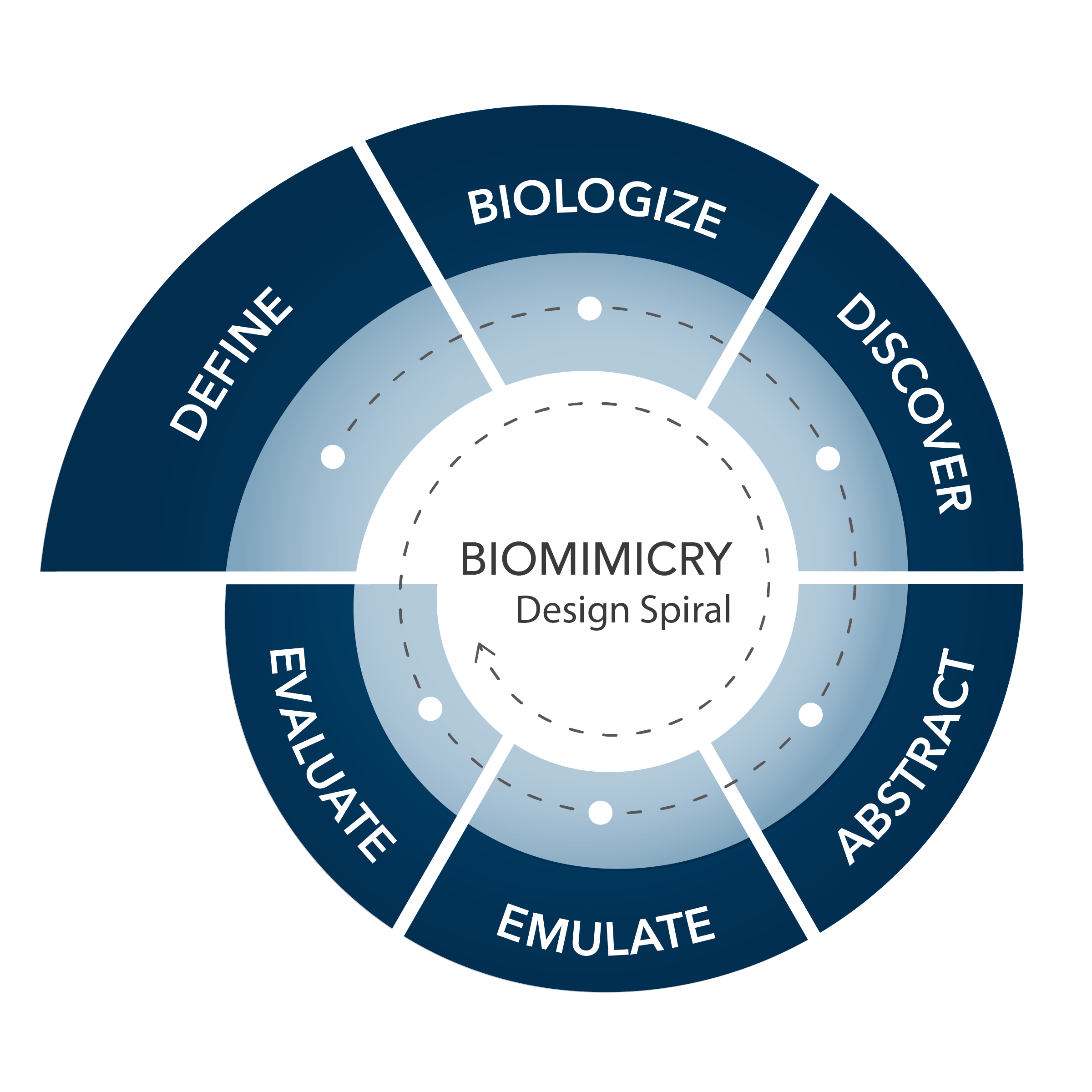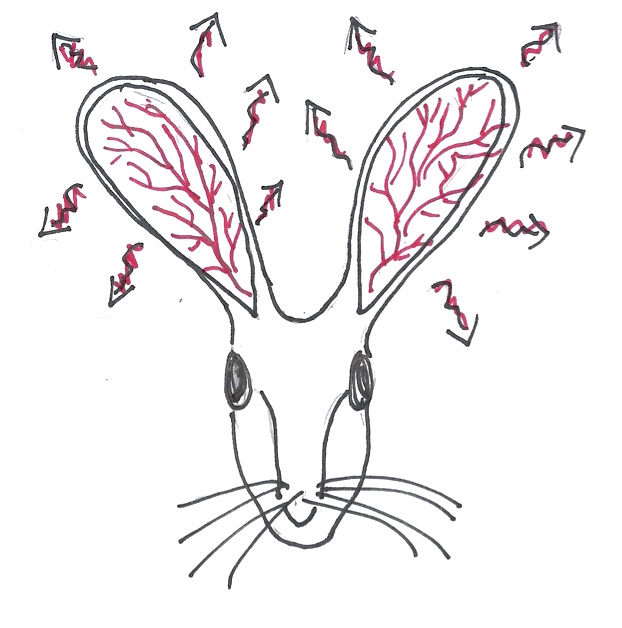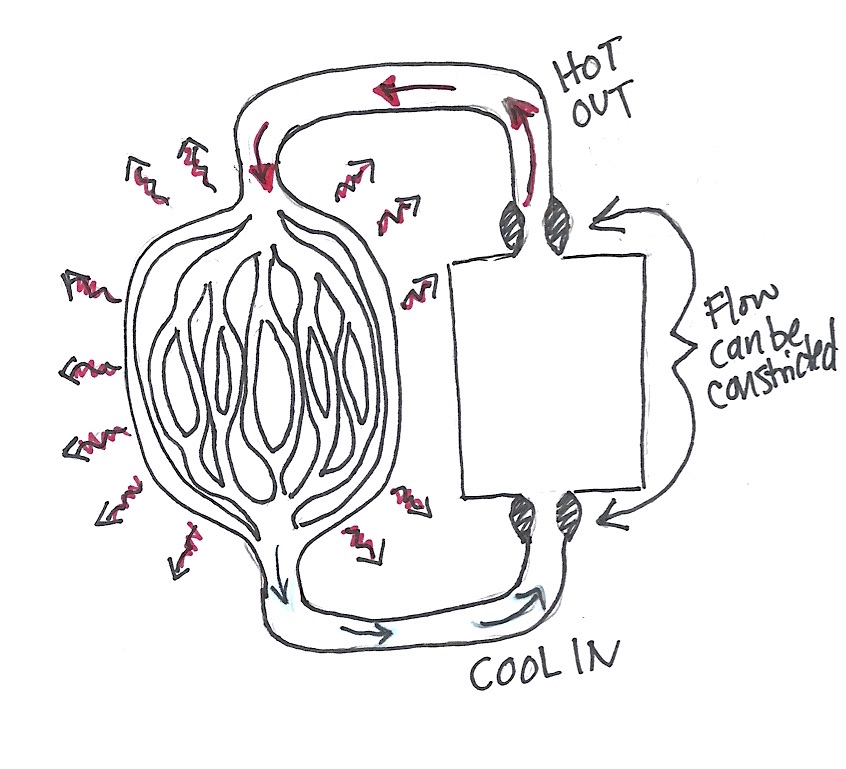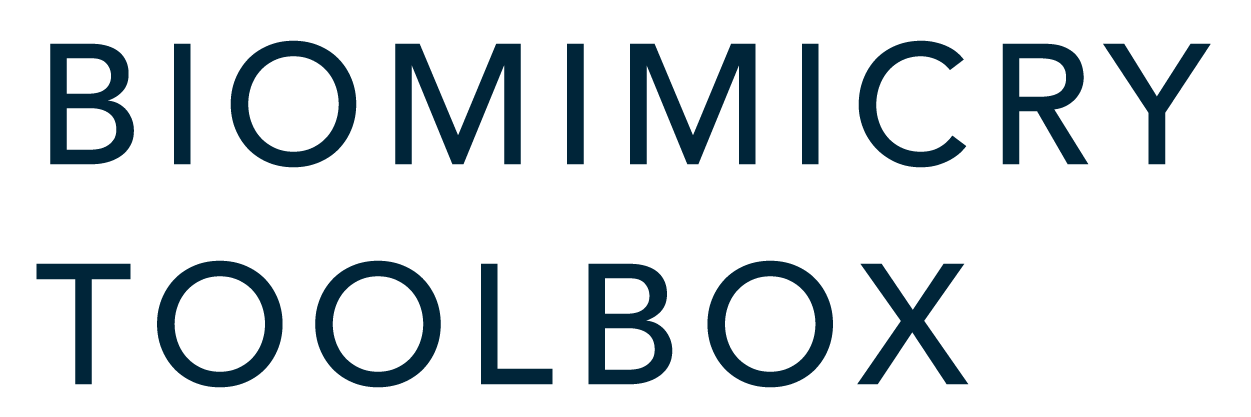Abstract Design Strategies

Definition Check
A bio-inspired design strategy is a statement and/or sketch that articulates that function and mechanism without using biological terms.
ABSTRACT
Carefully study the essential features or mechanisms that make the biological strategies successful. Use plain language to write down your understanding of how the features work, using sketches to ensure accurate comprehension.
Note: Abstracting design strategies is one of the most difficult steps in biomimicry. So don’t be discouraged if you stumble at first. With practice it will become second nature.
At any stage in this step, consider consulting a biologist, naturalist, and/or engineer to ensure you have an accurate understanding of the biology and have summarized or illustrated the design strategy faithfully.
Tips and suggestions to guide you.
1.
Summarize the biological strategy.
Summarize the key elements of the biological strategy, capturing how it works to meet the function you’re interested in. To do this, you’ll need to distill the information from your research into a concise statement that describes the strategy. If you are using an AskNature strategy, this step may have already been done for you.
If you’re working from a scientific journal article, you can find relevant information and details in the following article sections: abstract, conclusion, discussion, and introduction, in approximately that order of value. Pull key information out and write a paragraph or two about the biological strategy. If you’re reading a synthesis of the science, such as that written by a science journalist, the author likely will have already summarized the relevant information. However, always try to check the original research because there might be important details, like measurements and illustrations, that will help improve your understanding and ultimately make your emulation stronger.
2.
Draw the biological strategy.
Make a sketch showing your understanding of the features and mechanisms involved in the biological strategy. This can be a quick and simple drawing or diagram. Drawing at the same time you write biological strategy will help you visualize and then verbalize the strategy. Finding images in journal articles or online can be a big help. Sketching helps you narrow your focus to the most important lessons that can inform your design. It also can ensure a more accurate understanding of the mechanism(s) behind the function and help identify gaps in your knowledge.
3.
Identify keywords and phrases.
Highlight or underline the keywords and phrases from the strategy that address the function(s) and the mechanism(s) that make it effective. Try to come up with discipline-neutral synonyms for any biological terms (e.g. replace “fur” with “fibers,” or “skin” with “membrane”).
4.
Write the design strategy.
Using your keywords and phrases for reference, rewrite the strategy without using biological terms but staying true to the science. The design strategy should clearly address the function you want to meet within the context it will be used. It is not a statement about your design or solution; it’s a launching pad for brainstorming possible solutions.
Hint
5.
Draw the design strategy.
After writing your design strategy, you should draw it. A drawing not only forces you to understand the strategy, but helps you communicate it within multidisciplinary teams. The drawing depicting the design strategy is not simply a copy of the biological strategy drawing—it should have all of the biology-specific information removed and focus on the functional elements. Think like an engineer. Imagine the strategy as a mechanical system or process diagram in order to draw it without depicting biological parts.
6.
Review the design strategy.
When you are done, review your design strategy with a critical eye. Have you included all of the pertinent information? Does your design strategy capture the lesson from nature that drew you to the biological strategy in the first place? Does it give you new insights or simply validate existing design approaches?
Sample Abstracted Design Strategies

Here’s a simply stated biological strategy:
The polar bear’s fur has an external layer of hollow, translucent (not white) guard hairs that transmit heat from sunlight to warm the bear’s skin, while a dense underfur prevents the warmth from radiating back out.
Here’s a design strategy based on the same biological strategy:
A covering keeps heat inside by having many translucent tubes that transmit heat from sunlight to warm the inner surface, while next to the inner surface, a dense covering of smaller diameter fibers prevents warmth from radiating back out.
Sample Drawings

This simple illustration depicts the jackrabbit’s strategy for thermal regulation: The large ears are used to radiate heat via an extensive network of blood vessels. You can learn more about this strategy on Ask Nature.

Resources
Worksheet: Function and Design Strategy of a Push Pin
Worksheet: Function and Design Strategy of a Roof
Worksheet: Abstracting a Biological Strategy (Nacre)
Worksheet: Abstract a Biological Strategy (Hand)
Keep Learning
In the next step of the Design Spiral, Emulate, we’ll guide you in how to begin to apply insights gained from your abstracted design strategies to your design challenge.
Image Credits
Jackrabbit strategy illustrations (c)Biomimicry Institute.


